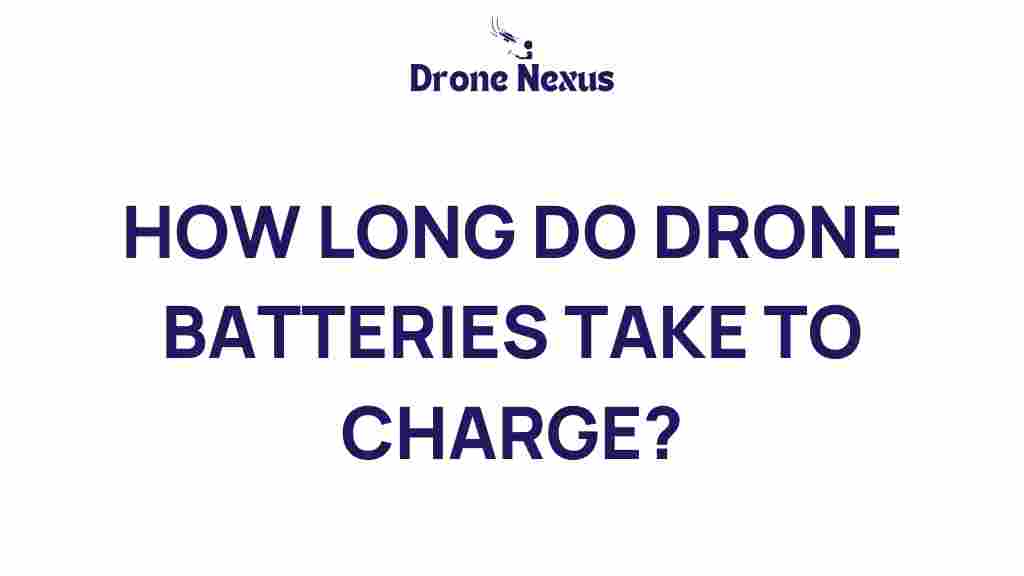The Surprising Truth About Drone Batteries
As drones become increasingly popular for both recreational and professional use, understanding their components is crucial for optimal performance. One of the most critical components of any drone is its power source: the drone batteries. Many users are often surprised to learn about the complexities involved in charging these batteries. In this article, we will explore the factors that affect drone battery charging times, the best practices for charging, and some troubleshooting tips to ensure you get the most out of your drone’s battery life.
Understanding Drone Batteries
Before diving into charging times, it’s essential to understand what drone batteries are and how they work. Most consumer drones operate using lithium polymer (LiPo) batteries due to their lightweight and high energy density. Here are some key characteristics of drone batteries:
- Voltage: Drone batteries typically come in different cell configurations, affecting their voltage. A common configuration is 3S (11.1V) or 4S (14.8V).
- Capacity: Measured in milliamp hours (mAh), this indicates how much energy a battery can store. Higher capacity batteries provide longer flight times.
- Discharge Rate: This indicates how quickly a battery can release its energy, which is crucial for performance during flight.
Factors Affecting Charging Times of Drone Batteries
The charging time for drone batteries can vary significantly based on several factors:
- Battery Capacity: Larger capacity batteries take longer to charge. For instance, a 2200mAh battery could take about 1 hour, while a 4000mAh battery may take up to 2 hours.
- Charger Type: The type of charger you use can greatly influence charging times. A higher amperage charger can charge batteries faster.
- Battery Condition: Older or damaged batteries may take longer to charge or may not hold a full charge.
- Ambient Temperature: Charging in extreme temperatures can affect charging speed and battery health. Always charge within the recommended temperature range.
Step-by-Step Process for Charging Drone Batteries
Charging your drone batteries properly ensures safety and longevity. Follow these steps for optimal charging:
- Choose the Right Charger: Always use a charger specifically designed for your battery type. Check the voltage and capacity ratings.
- Check Battery Condition: Inspect the battery for any signs of damage, swelling, or corrosion before charging.
- Set the Correct Parameters: If your charger allows, set the charge rate according to the battery’s specifications (e.g., 1C means charging at 1 times the capacity).
- Connect the Battery: Attach the battery to the charger securely, ensuring the polarity is correct.
- Monitor the Charging Process: Keep an eye on the battery and charger during the process. If you notice any unusual heat or swelling, disconnect immediately.
- Disconnect Once Charged: Once the charger indicates that the battery is fully charged, disconnect it promptly to prevent overcharging.
Common Charging Issues and Troubleshooting Tips
Even with proper procedures, issues can arise while charging drone batteries. Here are some common problems and troubleshooting tips:
- Battery Not Charging: If the battery isn’t charging, ensure that the charger is functioning correctly. Try a different battery to see if the issue persists.
- Long Charging Times: If charging takes longer than expected, check if you are using the correct charger and that the battery is in good condition.
- Overheating: If the battery or charger becomes excessively hot, disconnect immediately and allow them to cool. This may indicate a problem with the battery.
- Inconsistent Charge Levels: If the battery doesn’t hold a charge well, it might be time to replace it. Regularly monitor the health of your drone batteries.
Best Practices for Maintaining Drone Batteries
To ensure your drone batteries last as long as possible, follow these best practices:
- Store Properly: Store batteries at a partial charge (around 40-60%) in a cool, dry place.
- Avoid Deep Discharges: Regularly discharging a battery below its recommended voltage can shorten its lifespan.
- Use a Balance Charger: This ensures that all cells within a multi-cell battery are charged evenly, prolonging battery life.
- Regularly Inspect Batteries: Look for signs of wear, swelling, or damage. Dispose of any compromised batteries safely.
Conclusion
Understanding the intricacies of drone batteries and their charging times can significantly enhance your flying experience. By following the outlined steps and best practices, you can ensure that your batteries remain in excellent condition, providing you with the power necessary for your aerial adventures. Remember, proper maintenance and care can extend the life of your batteries, ensuring that your drone is always ready for takeoff.
For more tips on drone maintenance, check out our comprehensive guide. If you’re looking for high-quality drone batteries, visit this online store for a wide selection.
This article is in the category Technology and created by DroneNexus Team
